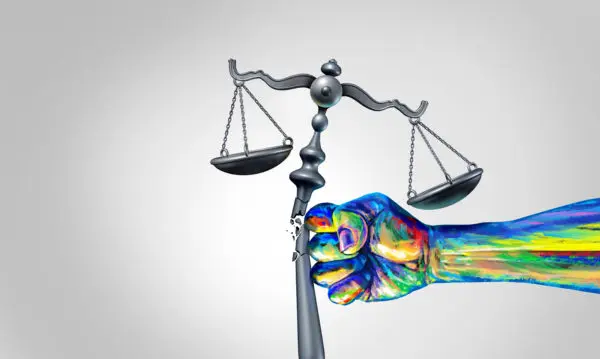Amidst the occasional but rare arrest, there have been renewed efforts to decriminalize mescaline-cacti at the local or state level in recent years. While these efforts have no tangible impact on Federal drug laws, they can be seen as a symbolic move toward a very different approach to public health. But such symbolism impacts the sacramental peyote cactus and the Native American Church (NAC) a little differently than other psychedelics.
There are explicit and hard-fought exemptions carved out for “bonafide religious use” of peyote by members of the NAC at the Federal level. And while the NAC gained a religious exemption in 1918, only members of federally recognized Native American Tribes are protected under Federal law. Texas is the only state where peyoteros can apply for licenses to harvest, transport, and sell peyote cacti.
Right now, the Federal prohibition of peyote is the only law that protects this critically threatened cactus from being poached to extinction in its natural habitat.
Decriminalization may seem simple because prohibition is inherently illogical, and in the case of peyote, there is an established religious use. But before we get ahead of ourselves, a better question might be: how can decriminalization of peyote support reciprocity with the Native American Church, and more broadly, with Native American Tribes? Before we consider the case of peyote, let’s take a deeper look at what a lack of reciprocity can look like.
Reciprocity Means Nurturing Relationships
Many ideologies helped shape the United States during its formative years, from liberty and brotherhood to oppression and violence. Our drug policies are intimately tied to these ideologies. While U.S. culture has slowly evolved its view of some things, the roots of genocide embedded in the relationships between settlers and Native American tribes might have a new bridge toward healing in the form of a new ideology: sacred reciprocity.
From Manifest Destiny to Peyote Policy
One of the most violent ideas was that of “Manifest Destiny,” which compelled European settlers to continually push westward in a “spiritually sanctioned” pursuit of resources. Sound familiar? It should. This was an extension of the ideology known as the “Doctrine of Discovery” that inspired the Spanish to colonize the Americas and any other place where Christianity had not yet taken root.
After a colonial period that saw everything from trade, conflict, and intermarrying among settlers and indigenous tribes along the East coast, the American Revolution gave way to further wars of conquest, land captures, treaty violations, and horrifying acts of genocide that continue to this day.
The ideology of “nothing about us, without us” applies to legislation that involves religious sacraments. Reciprocity, in part, begins by acknowledging the reality that U.S. citizens today are still settlers inhabiting stolen land that was claimed through deceit and violence. It extends to an ideology of mutual benefit and consent, and collaborative policy discussions at every turn.
Reciprocity means that when we make moves to change laws that protect tribal cultures, we do so with a spirit of hospitality and make sure policy changes actually benefit those they claim to, not our own ideas of what might be seen as helpful. This logic of reciprocity applies to any policy. Still, it is especially poignant among people that use drugs, who are often marginalized and oppressed, and consistently claim that they too should be invited to policy discussions. Just as psychedelic drug users advocate for seats at the table, they should extend the chair to those most impacted by peyote policy.
Reciprocity for Regulators
The colonial period may have ended for the former British subjects in the 18th century, but it continued for Native Americans under the U.S. government, who eventually forced Eastern tribes to leave their ancestral homes and relocate to the plains of the Oklahoma frontier. There, tribes from the Southwest shared peyote in ceremonies that would eventually lead to peyote religion and the formation of the Native American Church.
According to anthropologist James Mooney who helped the NAC collect evidence of sacramental use to testify before Congress, peyote is a cultural medicine for Native American tribes that endured acts of war. Mooney reported peyote was used as a panacea for both physical and spiritual ailments and that it also empowered a profound sense of collective resilience and individual strength.
Such strength was seen as an act of defiance by the settlers who were under instruction to force indigenous populations to assimilate into European-American culture. For this and other reasons, the sacramental peyote was painted as a narcotic by politicians and missionaries that had been tasked with “civilizing” the indigenous peoples of the newly formed United States. In the way it was applied, civilizing became an act of genocide that separated intact cultures from their roots. Dance, medicine, tradition, ritual, story, and the intimate knowledge of the land were interrupted by residential schools, missionaries, and the U.S. Army that frequently attacked tribes gathering for ceremonial purposes.
The United States government has publicly acknowledged some of these assaults, but acknowledgment is not equal to reciprocity. For example, putting up a Smithsonian exhibit to educate about the long legacy of broken treaties might have seemed “helpful” and supportive to Native Americans (and it arguably has been). But at the end of the day, actually honoring broken treaties is a better-intentioned bridge.
Similarly, decriminalizing peyote might seem helpful to Native American tribes, but regulators are likely missing something that could be more helpful. The only way to guarantee they don’t is to draft legislation with or under the direction of sovereign tribal nations.
Reciprocity and the Public
It’s important to note here that Peyotism is different from the traditional ceremony of the Wixárika people indigenous to Northern Mexico, where peyote is also integral to their cosmology and culture, albeit with different stories and customs. As is often the case with plant medicines, peyote has an ancient history of use but was shared across cultures during specific points in history.
Though peyote ceremonies were shared with anthropologists who aimed to help advocate for the rights of Native Americans, most of the general public projected a racist and classist attitude toward Native Americans. This was the other side of the assimilation process, wherein society served as a secondary pressure to “kill the Indian, save the man.”
For example, society participated in cultural genocide through another assimilation project that forcibly removed Native American children from their homes and placed them in the homes of Non-Native settlers. This was not a small project and went on for decades following WWII. According to a 1978 congressional task force, “the removal of Indian children from their natural homes and tribal setting has been and continues to be a national crisis.” An estimated 35% of Native American children were forcibly adopted through these programs that continued the assimilation efforts initiated a century before.
In general, the public allowed these programs to exist, although it is certain that most had no idea the extent of harm, damage, and violence they caused. While many may have been well-intentioned and thought they were “helping,” we must ask in hindsight how much time and consideration these families put into their decisions — and then reflect back on our own practices. If a reciprocal relationship had been prioritized instead, then tribal councils would have been involved in every case, and this situation would have undoubtedly been avoided.
Who Decides Whether We Decriminalize Peyote?
When we think deeply about reciprocity and the legacy of genocide that intersect peyote policy, we can start to reframe some of our questions and assumptions about what we believe is best for cultures other than our own. In the big picture, no one should be locked in a cage for possessing a plant. Ever. And also, Non-native people living in the United States should not be encouraged to change laws explicitly designed to protect the cultural rights — and ceremonial rites — of Native Americans or the NAC.
Perhaps instead, rather than decriminalizing peyote, we make moves to protect and conserve it explicitly. When the NAC was formed in 1918, there was more peyote growing in the wild than there were church members. Today, those numbers are trending in opposite directions. Peyote is not particularly potent, and participants in a ceremony may eat 10-40 buttons. With over 300,000 members and declining peyote groves in the wild, some suggest that something has to be done to improve the situation.
Though decriminalizing peyote and growing it for personal or communal use might seem helpful as a non-Native person, one must stop and ask whether this action simply makes us feel better or whether it makes a tangible difference in the lives of those most impacted by peyote policy.
When we think of decriminalizing plant medicines in general, we have to approach the question from a place of reciprocity. From here, we may realize that peyote decriminalization efforts are more complex than they may seem. In the United States, where we are barely beginning the process of decolonization dialogues, advocates and reformers may have a long way to go before we can claim that decriminalizing peyote is best for everyone involved.









